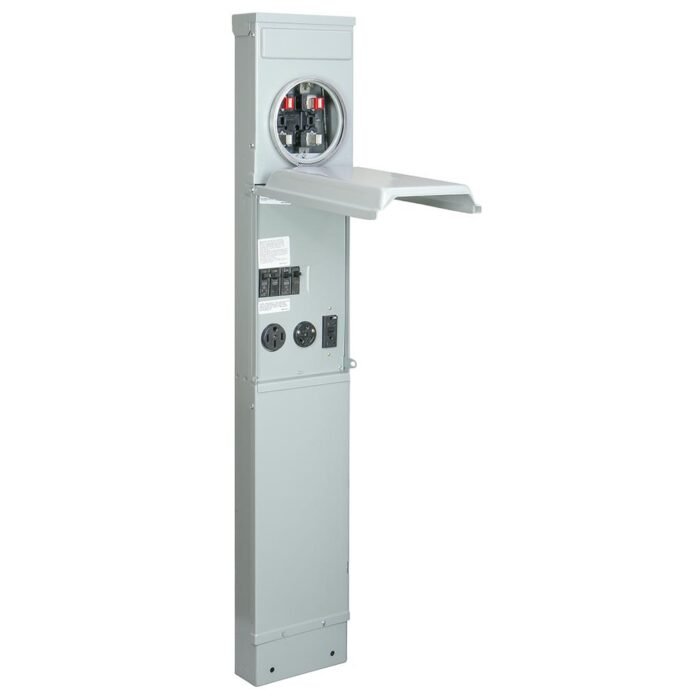When it comes to RVing, having reliable power is crucial for comfort and convenience. An RV pedestal provides the essential connection to electricity at campgrounds, allowing you to power lights, appliances, and charge devices without running down your RV batteries. Choosing the right RV pedestal can seem daunting, but understanding the key features and following some practical tips will help ensure you make a smart choice.
Understanding RV Pedestals and Their Importance
An RV pedestal is a unit installed at campsites, providing hookups for electricity, sometimes water, and occasionally even cable or internet services. It’s crucial to have a dependable pedestal to protect your RV’s electrical systems from fluctuations, surges, and other potential issues. A good-quality RV pedestal can make a big difference in your camping experience, so choosing the right one is essential for both convenience and safety.
Key Features to Consider
When selecting an RV pedestal, there are a few important features you should look out for to ensure compatibility and reliability:
- Voltage and Amp Options: RV pedestals typically come in 30-amp and 50-amp options. Knowing your RV’s power requirements is essential, as plugging a 50-amp RV into a 30-amp pedestal may not provide enough power while plugging a 30-amp RV into a 50-amp pedestal could potentially cause electrical issues if not handled properly. Be sure the pedestal matches or exceeds your RV’s needs.
- Safety Features (Surge Protection and Circuit Breakers): Electrical surges can damage RV appliances and devices. Many quality pedestals are equipped with built-in surge protection to guard against these spikes. Circuit breakers are another crucial feature, offering additional protection by shutting off power in case of overload or short circuit. This can prevent fires and reduce the risk of electric shock.
- Weatherproofing and Durability: RV pedestals are exposed to various weather conditions, so it’s important to choose one that can withstand rain, snow, and sun exposure. Look for pedestals made from weather-resistant materials, ideally with a sturdy, sealed design to prevent water from entering the unit.
- Ease of Installation and Use: Some pedestals come with more user-friendly features, such as clearly labeled outlets and easy-to-read indicators. If you plan to install the pedestal yourself, check for models that offer straightforward installation instructions or quick-connect wiring options.
Tips for Choosing the Best RV Pedestal
Now that you know the key features to look for, here are some additional tips for making the best choice:
- Check Local Codes and Regulations: Some campgrounds and RV parks have specific requirements for electrical hookups. Be sure to verify any local codes or standards, especially if you plan to install a pedestal on your own property. This ensures that your setup meets safety regulations and prevents potential electrical issues.
- Opt for Higher Quality and Reputable Brands: While it might be tempting to choose a less expensive pedestal, investing in a high-quality brand with a reputation for reliability is a wise decision. Trusted brands often have better quality control and offer warranties, giving you peace of mind for your electrical setup.
- Consider Future Needs: If you’re planning to upgrade your RV or add more appliances, choose a pedestal that can accommodate additional power requirements. Opting for a 50-amp pedestal instead of a 30-amp may be beneficial if you plan to upgrade in the near future, as it provides more flexibility for power needs.
- Read Reviews and Seek Recommendations: Other RVers’ experiences can offer valuable insight into which models perform well over time. Online reviews can reveal common issues, durability over extended use, and helpful installation tips. Joining RV forums or asking fellow campers for their recommendations can also be an excellent way to gather practical advice.
Installation and Maintenance
Proper installation and regular maintenance are essential to keep your RV pedestal functioning optimally. If installing on your own, follow all manufacturer instructions carefully, and use high-quality connectors and wires to avoid issues. After installation, check the pedestal periodically, ensuring that outlets and circuit breakers are in good condition and that there’s no corrosion or wear. Clean the unit occasionally, especially if it’s been exposed to adverse weather, and test the power flow to ensure it’s stable.
Also Read: Why Content Architecture Is Critical for Digital Marketing Success
Conclusion
Choosing the right RV pedestal requires understanding your power needs, prioritizing safety features, and opting for quality and durability. By keeping these key features in mind and following the tips provided, you can ensure a safer, more enjoyable camping experience with reliable power for your RV. With a little research and consideration, you’ll be able to find an RV pedestal that will serve you well, wherever your adventures take you.

